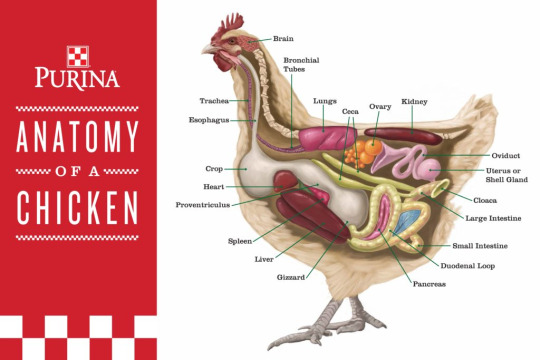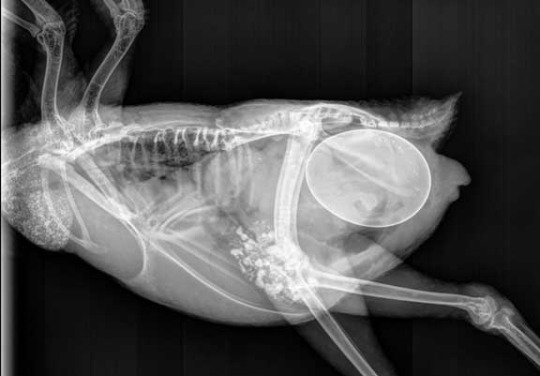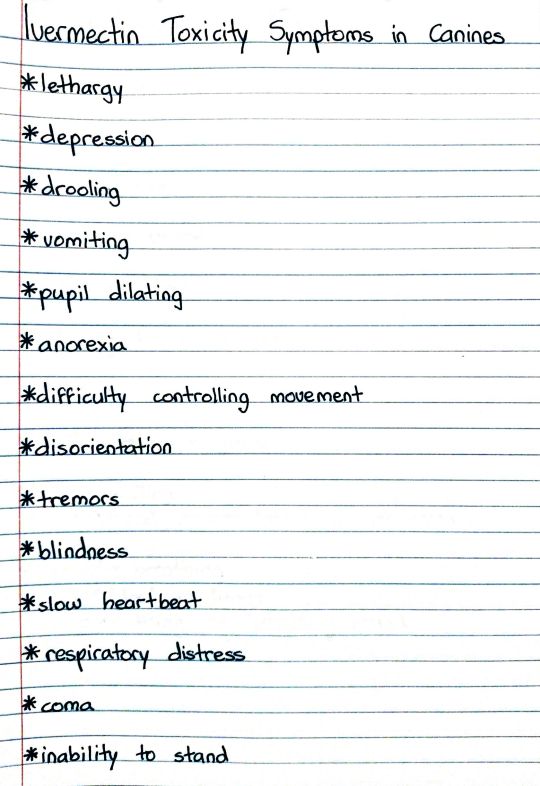Text
Hey everyone!! I've been running a Discord Server for a while now and figured I'd share it on here!
My Discord Server is designed for those who are currently working in, are in school for, or have interest in veterinary medicine or other related animal science fields. It's meant for the sharing of experiences, knowledge, information, resources, and many other things.
I aim to build a safe and positive community blend of the past, current, and future veterinary work forces to be able to grow as one and learn new things from one-another.
**THIS SERVER IS NOT INTENDED FOR PET OWNERS SEEKING MEDICAL ADVICE OR CARE! This is illegal in some places and will not be tolerated. **
This is a server built upon a zero-discrimination policy (meaning no toleration of gender, sexual identity, racial, cultural, disability, age, or socio-economic class slander here). We welcome everyone to be a part of this vastly growing field and hope you will join us on our journey to grow, learn, and better help animals across the globe.
We have channels sorted by animal type to facilitate the finding and sharing of information and resources for those interested in more animal science than medicine!
I host events including lectures and trivia in the server and do a fact of the day!! Also planning on hosting some fun competitive events and voice chat study/hangout sessions!
I hope you come hang out and learn with us!!
- KillSwitch (Gia) <3
#veterinary#veterinary medicine#veterinary school#veterinary science#animal science#science#medicine#biology#veterinarians#veterinary assistant#vet med#vet#veterinarian#pre vet#vet nurse#vet tech#pathology#life sciences#discord server#lgbt friendly#animals#large animals#small animals#exotic animals#zoology#wildlife#animal biology#learning#education
39 notes
·
View notes
Text
do not put your coffee-granule encrusted spoon (or fork or tongue depressor, i dont judge) in the communal sugar!
33 notes
·
View notes
Text
Here's what happens if you let your cats play with hair ties. This cat was brought in for occasional vomiting and a hard mass felt in its stomach. We did surgery today and pulled out this!
Warning: gross pile of hair ties below.

Over twenty hair ties and a sweater cord in this cat's stomach. She had actually kept gaining weight, had no loss of appetite, and no diarrhea.
Keep your hair ties away from your cats!
943 notes
·
View notes
Text
My dog swallowed a rubber duck and I had to take him to the ER to get it removed but do yall wanna see the X-ray that the entire hospital was freaking out about??
56 notes
·
View notes
Text
The best kind of online lecture is one where the presenter has to yell at one of their pets off screan
96 notes
·
View notes
Text
The Poster Doggies of Heart Disease
Disclaimer: The following is a list of breeds and the heart diseases they can commonly get. I am NOT saying only this breed gets this disease, nor am I saying that every dog of this breed will get this disease. This is simply a short list of the common doggies one thinks of when examining a particular heart disease. So without further ado:
-> Doberman Pinscher: Dobies are prone to Dilated Cardiomyopathy, or DCM. This is a disease where the heart becomes enlarged and dilated, and is unable to contract and therefore pump blood properly. This commonly results in congestive heart failure.

-> Cavalier King Charles Spaniel: Oh my cute little spaniels… I don’t think I’ve met one yet without a heart murmur. These get Mitral Valve Degeneration (also known as Endocardiosis). This is a relatively common change in the valves where they become knobby and unable to close correctly. This allows moderate to insane amounts of blood to spill back into the atrium (called regurgitation), which is the main reason you hear a murmur, and of course causes the heart to work harder.

-> Boxers: Nothing says poster child like having a disease named after you. Boxer Cardiomyopathy, or Boxer arrhythmogenic right ventricular cardiomyopathy (ARVC), if you want to get fancy. This is the disease of the heart’s muscle (myocardium), that results in some serious and sometimes fatal arrhythmias.
-> Miniature Schnauzer: Sick Sinus Syndrome, or AKA the heart auscultation that might just stop your own heart! I’ve recently heard one of these and just about fell over! This is a disease where the sinus node, a very crucial part of the heart that sends electrical pulses to help with heart rate and contraction, doesn’t work too well, resulting in a slow heart rate or even pauses in between beats.
Check out the ECG below. See the FLATLINE? The heart shouldn’t stop beating for that long!! No wonder these dogs often present for sudden collapse!

(image from lifeinthefastlane.com)
506 notes
·
View notes
Text
Fun fact: I possess a copy of a memoir written by a veterinary surgeon in the early 50s (very locally published I think) in which he remembers talking with his father, also a veterinary surgeon, in the early 1900s about how worried they were that the rise of the motor car would surely spell the end of the veterinary profession, due to a decline in the number of horses to care for. After all, what is a vet good for besides horse maintenance?
It's so interesting to remember that there was once a time when a veterinary surgeon wouldn't deem companion pets as worthy of their time and expertise. And it is for this reason that I am assured that my ancestral colleagues would disapprove of me. Not because I am a woman working in veterinary, but because I have given CPR to a cat.
20 notes
·
View notes
Text
Information on Pseudorabies!
- Also called Mad Itch, Infectious Bulbar Paralysis, and Aujeszky’s Disease.
- Definition: “Pseudorabies is an infectious disease of cattle, swine, rats, dogs, and cats caused by a filterable virus and characterized by intense, localized, irritation of the skin, convulsions, prostration, and death.”
- Used to be confused with rabies.
- Was recognized as its own specific disease in 1902.
- The causing virus was discovered in 1910.
- Transmission of virus was demonstrated in swine in 1935.
- It is found mostly throughout Europe, Asia and South America, but can also be found in Africa and the Midwestern United States.
- The incubation period of the virus is typically 3 to 4 days, but could be as long as 10 days.
- Symptoms vary depending on the animal.
- The virus enters through the skin, proliferates, and produces generalized infection.
- It produces irritation of nerve endings and invades nerve cells that causes encephalitis.
- Diagnosis can be made based on history of disease in symptoms, as well as some laboratory tests.
- The prognosis is very unfavorable in most livestock however, in horses, the prognosis is favorable, though the disease is rare.
- There is no treatment for this virus currently.
- There have been very few cases of transmission to humans, although you should still wear PPE when handling suspected animals.
- There are preventative measures that can be taken to prevent the spread of disease.
All information is sourced from my veterinary textbooks! : )
#rabies#veterinary school#veterinary science#veterinary medicine#veterinary#pseudorabies#medicine#science#virology#animal science
4 notes
·
View notes
Text
"I think of calves as great danes"
-Anesthesia professor
5 notes
·
View notes
Text
Hey again! (^-^)
Just a reminder about my Discord Server that can be joined below!
The server is designed for those who are currently working in, are in school for, or have interest in veterinary medicine or other related animal science fields. It's meant for the sharing of experiences, knowledge, information, resources, and many other things.
I aim to build a safe and positive community blend of the past, current, and future veterinary work forces to be able to grow as one and learn new things from one-another.
**THIS SERVER IS NOT INTENDED FOR PET OWNERS SEEKING MEDICAL ADVICE OR CARE! This is illegal in some places and will not be tolerated. **
This is a server built upon a zero-discrimination policy (meaning no toleration of gender, sexual identity, racial, cultural, disability, age, or socio-economic class slander here). We welcome everyone to be a part of this vastly growing field and hope you will join us on our journey to grow, learn, and better help animals across the globe.
We have channels sorted by animal type to facilitate the finding and sharing of information and resources for those interested in more animal science than medicine!
I host events including lectures and trivia in the server and do a fact of the day!! Also planning on hosting some fun competitive events and voice chat study/hangout sessions!
I hope you come hang out and learn with us!!
- KillSwitch (Gia) <3
Reblogs are welcomed and very, very appreciated!!
#oncology#medicine#veterinary#animals#large animals#exotic vet#exotic animals#lgbt friendly#small animals#dogs#cats#avian vet#veterinary school#science#pathology#microbiology#cardiology#anesthesiology#dentistry#lgbt#neurology#dermatology#ophthalmology#pharmacology#hematology#discord#nutrition#vetblr#parasitology#gastroenterology
5 notes
·
View notes
Text

I get a lot of questions asking why vaccines in animals are not size-dependent. This is a great infographic explaining why!
345 notes
·
View notes
Text
The Benefits of Using Endoscopy in a Veterinary Practice
In recent years, veterinary medicine has seen significant advancements in diagnostic and treatment technologies. One such advancement that has revolutionized veterinary practice is the use of endoscopy. Endoscopy is a minimally invasive procedure that uses a flexible instrument called an endoscope to visualize and examine the internal organs and structures of animals. In this blog post, we will explore the numerous benefits of using endoscopy in a veterinary practice.
Accurate Diagnosis
Endoscopy allows veterinarians to get a clear and detailed view of the internal organs and structures of animals. This enables a more accurate and precise diagnosis of various conditions and diseases. By directly visualizing the problem area, veterinarians can identify abnormalities, such as tumors, foreign objects, ulcers, strictures, and more. Accurate diagnosis leads to more effective treatment plans and better outcomes for our furry friends.
Minimally Invasive
Compared to traditional surgical procedures, endoscopy is minimally invasive. Instead of making large incisions, endoscopy only requires small incisions or natural body openings, such as the mouth or anus. This results in less pain, discomfort, and a faster recovery time for animals. Minimally invasive procedures also reduce the risk of post-operative complications, including infection and excessive scarring.
Reduced Patient Stress
Veterinary visits can often be stressful for animals. However, with endoscopy, the stress levels are significantly reduced. Instead of being put under general anesthesia for invasive surgeries, animals undergoing endoscopy typically receive sedation or local anesthesia. This reduces their anxiety, minimizes the risks associated with general anesthesia, and makes the overall experience less traumatic for both the animals and their owners.
Versatility
Endoscopy is a versatile procedure that can be used in different areas of veterinary medicine. It can be employed in various specialties, including gastroenterology, urology, respiratory medicine, and more. With different types of endoscopes and specialized instruments, veterinarians can examine and treat a wide range of conditions, such as gastrointestinal disorders, urinary tract issues, airway problems, and even perform biopsies.
Lower Costs
While the initial cost of purchasing endoscopy equipment may be higher than traditional diagnostic tools, such as X-rays or ultrasounds, the long-term benefits can surpass the investment. Endoscopy allows for more accurate diagnoses, reducing the need for additional diagnostic tests and surgeries. This not only saves money for the pet owners but also minimizes the stress and risks associated with unnecessary procedures.
In conclusion, the use of endoscopy in veterinary practice offers numerous benefits. From accurate diagnosis and minimal invasiveness to reduced patient stress and versatility, endoscopy has transformed the way veterinarians approach diagnostics and treatments. By embracing this cutting-edge technology, veterinary practices can provide the best possible care to animals while ensuring their well-being and comfort.
7 notes
·
View notes
Text
Swine - Lameness
An important differential list for piggy friends is lameness. The following is a list of the most common causes.
Erysipelas
Erysipelothrix rhusiopathiae
Growing pigs, unvaccinated gilts
Multiplies in body and invades bloodstream to produce septicamia
ACUTE - Fever, joint pain, diamond skin lesions
CHRONIC - enlarged joints, lameness, endocartitis
Dx - Clinical signs + Gross lesions
Rapid response to antimicrobials (penicillin)
PCR on blood/tissue
Tissue IHC
Tx - penicillin and NSAIDs
DDx - CSF, Actinobacillus pleuropneumoniae, Septicemia, Porcine dermatitis and nephropathy syndrome
Glasser’s Disease
Haemophilus parasuis
Young animals (4-8 weeks)
PERACUTE - Death
ACUTE - Fever, swollen joints, CNS signs, coughing (RESP signs), polyserositis
CHRONIC - fibrin, decreased growth rate, polyserositis
Dx - PCR, bacterial swab on necropsy
Tx - antibiotics (everyone!)
Mycoplasma hyorhinis
Infectious arthritis
Potbelly pigs! Very young to old
Lameness with or without joint swelling in one or more limbs
Tx - lincomycin
DDx - E. rhusiopathiae, Strep, M hyosynoviae, Haemophilus parasuis
Mycoplasma hyosynoviae
Normal commensal bacteria in URT of sows and older pigs
Mixing and moving groups, overcrowding, cold/drafty barns
4-8 week old piglets –> grower/finisher
Acute lameness, pain in major joints (elbows, stifles, hocks) with soft swellings
Dx - lameness, CS with NO respiratory signs
Sample joint fluid
Tx - tylosin and lincomycin
49 notes
·
View notes
Text
Reproductive diseases in birds

Dystocia, or egg-binding, is the inability to pass an egg, and often occurs due to young, female birds laying their first egg, deficiencies in nutrients such as calcium, abnormalities within the reproductive tract, and misshapen eggs. The first thing an avian veterinarian will do when presented with a dystocia is take an x-ray (as long as the bird is stable enough for the procedure). The x-ray will help determine if the egg shell is normal (e.g. if there is enough calcium present, the shell is intact, the egg is a normal shape), and confirm that there is only one egg and that it is in proper position to be laid (known as oviposition - pointy side should be facing down and backwards, toward the cloaca). If any abnormalities are found, it is unlikely that the bird will lay the egg on her own or with supportive care, and it may need to be surgically removed. However, under certain conditions, some birds may be able to pass abnormal eggs and shell remnants.

Supportive care involves placing the bird in an incubator, giving it fluids, injecting a calcium supplement, and administering medications that reduce pain. If 24 to 48 hours have passed and the bird has still not laid her egg, or if her health is rapidly declining, she will likely need surgery. The least invasive procedure to remove the egg is called an ovocentesis, in which the egg is punctured and its contents are removed, followed by the shell bits. A small forceps is guided through the cloaca and into the oviduct. Once the egg is visible, a hole is poked in the shell with a needle, and the liquid contents are sucked up. While this is happening, the surgeon also presses down on the egg from the outside with their other hand to break the egg shell. Finally, each piece of the shell is gently removed - if not all of them can be taken out, they can be left in and the bird will usually be able to pass the remaining bits on her own over the next few days. An ovocentesis is most successful if the egg is within the uterus - if the procedure fails, then a little birdie C-section will be in order.
Female birds of species that have been bred for frequent egg laying, such as chickens, are very prone to reproductive diseases. These include egg yolk coelomitis (abnormal ovulation into the body cavity that causes a severe inflammatory reaction to the yolk), cysts (pockets of fluid and/or air) within the ovary, and ovarian cancer (problematic especially in chickens). There are also many disease processes that specifically affect the oviducts, such as inflammation, impaction/blockage (also a common issue in chickens), torsion/twisting, and prolapse. Treatment of these conditions often involve surgery (salpingohysterectomy) that is similar to spaying a female dog or cat. Finally, chronic egg laying, which can occur in chickens and small parrots such as cockatiels and budgies, can lead to issues in calcium metabolism, dystocia, and other diseases. Most birds will respond to hormonal treatment involving drugs called gonadotropin-releasing hormone agonists. These include leuprolide acetate (Lupron), which lasts around 2 weeks, and deslorelin acetate (Suprelorin), which is given as an implant that lasts for 2 to 3 months.
275 notes
·
View notes

